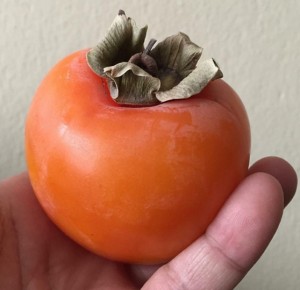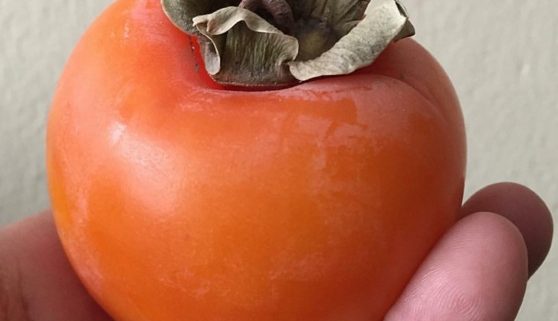Persimmon? Isn’t that a Tomato?

Persimmon? Isn’t that a tomato?
Many of us think that winter seasons means there’s a limited fruit selection; however, the truth is that there is plenty of variety on the market of winter fruit. One fruit that is currently in season is the persimmon.
The persimmon is a red/orange fruit that resembles a tomato in appearance. To be honest, I had never had a persimmon myself until a few years ago and I did not like it at all. It was mushy and slightly bitter to my palate. I decided to give it a try again a month ago and was shocked by how much I liked it this time around. So what changed? Surely it was not my taste within the span of a year. What I found is that there are different types of persimmons and they should be eaten differently.
Which is which?
After doing some research, I found that there are many different types of persimmons. Who knew? The most popular types are the fuyu and the haciya fruit, both of which originated in Asia and made their way to the Western hemisphere over the last couple hundred years.
The fuyu persimmon is more rounded and resembles a tomato. The haciya persimmon is shaped more like an acorn. The fuyu persimmon is sweet and should be eaten when it is firm. The haciya persimmon is astringent and can only be eaten when it is very ripe- to the point where it is almost mushy. The fuyu is typically sliced or eaten like an apple. The haciya on the other hand is usually cut in half and eaten with a spoon because it is so mushy. I am guessing that my first experience with the persimmon was with an unripe haciya persimmon. Now I know which to buy and so do you!
The Power Packed Persimmon
Persimmons are loaded with vitamins, minerals, and important antioxidants to promote your health! One persimmon contains about 80% of your daily requirement for vitamin C! Vitamin C is such an important nutrient, which aids in immune support, acts as an antioxidant, and even helps with the absorption of dietary iron.
Besides vitamin C, persimmons also contain a significant amount of fiber, potassium, iron, and phosphorous. These can play a role in digestive health, blood pressure maintenance, red blood cell production, and bone health. It is no wonder the persimmon has become increasingly popular in the last few years. Slice one up and add it to your salad or eat it whole, either way you will be sure to enjoy every last bite and your body will thank you!
Your Turn to Take Action: Try to find persimmons of both varieties in your market and give both a try at their peak of ripeness. Let me know which you prefer in the comments below.


Leave a Reply
Want to join the discussion?Feel free to contribute!